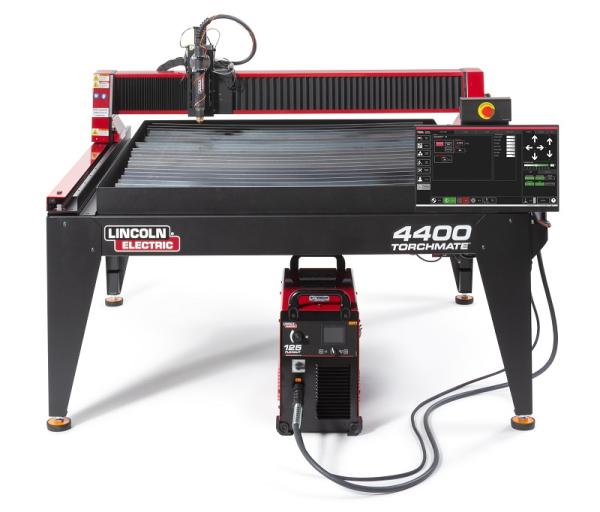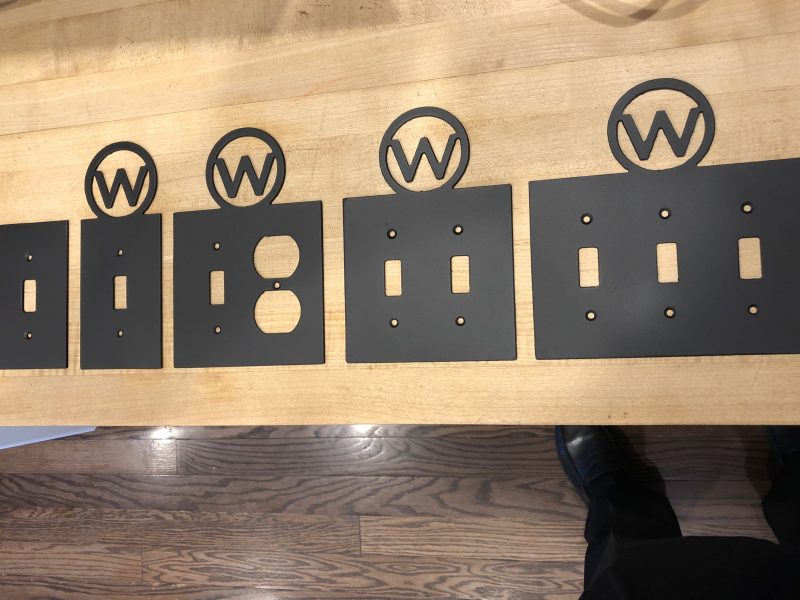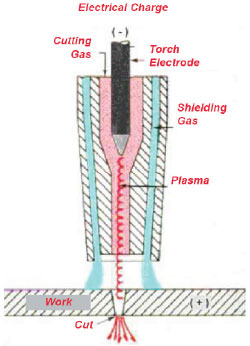Table of Contents
Plasma CNC cutting machines offer a versatile and efficient way to cut through various materials with precision. However, using THC (torch height control) may not be the best option in certain situations. In this article, we’ll explore the circumstances where THC should not be used and what alternatives may be available.
While THC is a valuable tool for maintaining consistent torch height during cuts, it may not be suitable for materials that are too thin or too thick. Additionally, certain materials may not require THC and may even be negatively affected by its use. By understanding when not to use THC, CNC plasma cutting operators can optimize their cutting process and achieve better results.
When Not to Use THC on a Plasma CNC?
THC (Torch Height Control) is an essential component in the field of CNC plasma cutting. It ensures accurate torch height during cutting. However, there are certain situations when THC should not be used. This article will outline those scenarios to help you make an informed decision.
1. Cutting Thin Materials
If you are cutting thin materials, it is best not to use THC. The reason is that the sensor may not be able to detect the material’s thickness, resulting in inaccurate cutting. In such cases, it is recommended to set the torch height manually.
When cutting thin materials, you can also use a different technique called ‘touch-off.’ This method involves touching the torch to the material’s surface and manually setting the distance between the torch and the material.
2. Cutting Non-Ferrous Metals
THC is not recommended for cutting non-ferrous metals such as aluminum, copper, and brass. The reason is that these metals have a lower conductivity than ferrous metals. The THC sensor may not be able to detect the distance between the torch and the material accurately.
In such cases, it is recommended to use a floating head or a manual height control system. A floating head system will allow the torch to move up and down with the material, ensuring accurate cutting.
3. Cutting Perforated Materials
If you are cutting perforated materials, it is not recommended to use THC. The reason is that the sensor may detect the perforations instead of the material’s surface, resulting in inaccurate cutting.
To cut perforated materials accurately, it is recommended to use a manual height control system. You can use a touch-off technique to set the torch height manually.
4. Cutting Reflective Materials
THC is not recommended for cutting reflective materials such as stainless steel. The reason is that the material’s reflective surface can interfere with the sensor’s ability to detect the distance between the torch and the material.
In such cases, it is recommended to use a manual height control system. You can also use a different technique called ‘pierce height.’ This technique involves setting the torch height slightly higher than the material’s surface during piercing, and then lowering it to the correct height for cutting.
5. Cutting Uneven Materials
If you are cutting uneven materials, it is not recommended to use THC. The reason is that the sensor may not be able to detect the distance accurately, resulting in incorrect cutting.
To cut uneven materials accurately, it is recommended to use a manual height control system. You can use a touch-off technique to set the torch height manually.
6. Cutting Dirty Materials
THC is not recommended for cutting dirty materials. The reason is that the sensor may not be able to detect the material’s surface accurately due to dirt or debris.
In such cases, it is recommended to use a manual height control system. You can use a touch-off technique to set the torch height manually.
7. Cutting Small Parts
If you are cutting small parts, it is not recommended to use THC. The reason is that the sensor may not be able to detect the material’s surface accurately, resulting in incorrect cutting.
To cut small parts accurately, it is recommended to use a manual height control system. You can use a touch-off technique to set the torch height manually.
8. Cutting Thick Materials
THC is not recommended for cutting thick materials. The reason is that the sensor may not be able to detect the material’s surface accurately due to its thickness.
In such cases, it is recommended to use a manual height control system. You can use a touch-off technique to set the torch height manually.
9. Cutting Curved Materials
If you are cutting curved materials, it is not recommended to use THC. The reason is that the sensor may not be able to detect the material’s surface accurately due to its curvature.
To cut curved materials accurately, it is recommended to use a manual height control system. You can use a touch-off technique to set the torch height manually.
10. Cutting with a Consumable Change
THC is not recommended for cutting with a consumable change. The reason is that the sensor may not be able to detect the new consumable’s height, resulting in incorrect cutting.
In such cases, it is recommended to use a manual height control system. You can use a touch-off technique to set the torch height manually.
Conclusion
In conclusion, THC is an essential component in CNC plasma cutting, but it is not suitable for all cutting scenarios. When cutting thin, non-ferrous, perforated, reflective, uneven, dirty, small, thick, curved material or with a consumable change, it is best to use a manual height control system. Doing so will ensure accurate cutting and avoid costly mistakes.
Remember, the key to successful CNC plasma cutting is choosing the right cutting technique for the job at hand. By following the guidelines outlined in this article, you can make an informed decision and achieve accurate cutting results every time.
Frequently Asked Questions
Plasma CNC is a cutting-edge technology that is widely used in various industries. However, there are times when THC (Torch Height Control) should not be used. In this section, we will answer some common questions related to when not to use THC on a Plasma CNC.
What is THC, and how does it work on a Plasma CNC?
THC stands for Torch Height Control, which is a vital component of a Plasma CNC system. It automatically adjusts the height of the plasma torch during the cutting process to maintain a consistent distance between the torch and the workpiece. THC works by measuring the voltage between the torch and the workpiece and adjusting the torch height accordingly.
However, there are times when THC should not be used, such as when cutting perforated or expanded metal. In such cases, THC may not work correctly, resulting in incorrect cutting depth, which can damage the workpiece or the machine itself.
When should I turn off THC on my Plasma CNC?
There are a few instances when you should turn off THC on your Plasma CNC. One of them is when cutting a material with a thickness of fewer than 1/16 inches. Since the voltage generated during the cutting process is not high enough, THC may not work correctly, leading to improper cutting depth.
Another instance when THC should be turned off is when cutting materials that require high precision, such as intricate designs or sharp corners. THC may cause the torch to move too slowly, resulting in a slower cutting process and imprecise cuts.
Can I use THC when cutting non-conductive materials?
No, THC should not be used when cutting non-conductive materials such as wood or plastic. Since THC works by measuring the voltage between the torch and the workpiece, it cannot function correctly on materials that do not conduct electricity.
Moreover, the use of THC on non-conductive materials can result in damage to the machine or the workpiece. Therefore, it is essential to turn off THC when cutting such materials or use alternative cutting methods, such as laser cutting.
What are the risks of using THC incorrectly?
Using THC incorrectly can result in various risks, such as damage to the machine, workpiece, or operator. For instance, if THC is used when cutting perforated or expanded metal, it can cause the torch to plunge too deep, damaging the machine or the workpiece.
Moreover, if THC is used when cutting non-conductive materials, it can cause the machine to malfunction or damage the workpiece. Therefore, it is essential to know when not to use THC to avoid such risks and ensure a safe and efficient cutting process.
How can I determine if THC is working correctly on my Plasma CNC?
There are a few ways to determine if THC is working correctly on your Plasma CNC. The first is to check the torch height during the cutting process. If the torch height remains consistent throughout the cutting process, THC is working correctly.
Another way is to check the quality of the cut. If the cut is precise and clean, THC is functioning correctly. However, if the cut is jagged or imprecise, THC may not be working correctly, and further adjustments may be required.
In conclusion, it is important to note that THC (or thread cutting oil) is not always the best choice when working with a plasma CNC machine. There are certain situations where using THC can actually harm the machine and the quality of the cut.
Firstly, if you are working with thicker materials, THC may not be necessary as the machine can easily cut through the material without it. In fact, using THC in this situation can lead to excess smoke and residue, which can damage the machine and reduce the quality of the cut.
Secondly, if you are working with materials that are already coated or painted, THC can also be detrimental as it can remove the coating and affect the quality of the final product. In this case, it is best to avoid using THC and instead rely on the machine’s natural cutting abilities.
Lastly, if you are working with a plasma CNC machine that has a built-in THC system, it is important to ensure that it is properly calibrated and adjusted for the specific material and thickness being cut. Failure to do so can result in poor quality cuts and damage to the machine.
Overall, while THC can be a useful tool in certain situations, it is important to consider the specific circumstances and needs of the project before deciding to use it on a plasma CNC machine.
Request a quote today!
Please compress the file into a ZIP or RAR file before uploading. Alternatively, send through your RFQ by email.
enquires@unitymanufacture.com





